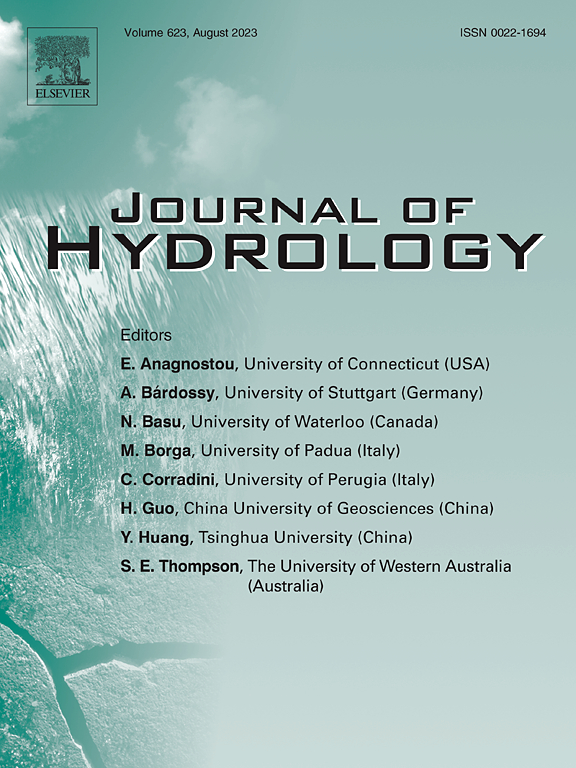FastGAS:一种支持无人机的框架,用于在沿海和山区河流环境中快速、坚固的砾石自动筛分
IF 6.3
1区 地球科学
Q1 ENGINEERING, CIVIL
引用次数: 0
摘要
砾石粒度分布对了解沿海和山区河流过程具有重要意义。传统的基于无人机的筛分算法存在两个局限性:(1)在坡度变化较大的地区,由于高程相关的缩放导致像元标定误差;(2)周期监控图像批量处理的效率和准确性面临挑战。该研究提出了一种快速砾石自动筛分(FastGAS)方法,该方法结合校准球来建立像素大小的对应关系,同时减少斜坡引起的校准误差,并作为航路点基准。该框架通过球体检测实现自动批量处理,结合优化的种子生成和四种邻域搜索算法,实现高效的砾石分割和粒度分布反演。对沿海和山地河流环境的35幅图像进行验证,结果表明与人工测量结果非常吻合(NRMSE = 0.07-0.58),并通过中国烟台市月相湾一个月的连续监测进一步证实了这一点。对比分析显示,FastGAS在精度上优于卵石ecountsauto(0.24-0.98)、pyDGS(0.57-2.69)和SediNet(0.73-9.13),同时保持有竞争力的处理速度(28秒比SediNet的10秒)。该方法在精度、稳定性和计算效率方面的优势表明,它在沿海和山区河流的自动化长期监测方面具有强大的潜力。本文章由计算机程序翻译,如有差异,请以英文原文为准。
FastGAS: a UAV-Enabled framework for fast and robust gravel auto-sieving in coastal and mountainous fluvial environments
The grain size distribution (GSD) of gravels plays a crucial role in understanding fluvial processes in coastal and mountainous areas. Conventional UAV-based sieving algorithms face two limitations: (1) Pixel calibration errors caused by elevation-dependent scaling in areas with significant slope variations; (2) Challenges in the efficiency and accuracy of batch processing of cyclical monitoring images. This study presents a fast gravel automated sieving (FastGAS) method incorporating calibration spheres to establish pixel-size correspondence, simultaneously reducing slope-induced calibration errors and serving as waypoint benchmarks. The proposed framework enables automatic batch processing through sphere detection, combined with optimized seed generation and four neighborhood search algorithms for efficient gravel segmentation and size distribution inversion. Validation conducted with 35 images from coastal and mountainous fluvial environments demonstrated strong agreement with manual measurements (NRMSE = 0.07–0.58), further confirmed by one-month continuous monitoring in Moon Bay, Yantai City, China. Comparative analysis showed FastGAS outperformed PebbleCountsAuto (0.24–0.98), pyDGS (0.57–2.69), and SediNet (0.73–9.13) in accuracy while maintaining competitive processing speed (28 s vs. SediNet’s 10 s). The method’s advantages in precision, stability, and computational efficiency suggest its strong potential for automated long-term monitoring of coastal and mountainous rivers.
求助全文
通过发布文献求助,成功后即可免费获取论文全文。
去求助
来源期刊

Journal of Hydrology
地学-地球科学综合
CiteScore
11.00
自引率
12.50%
发文量
1309
审稿时长
7.5 months
期刊介绍:
The Journal of Hydrology publishes original research papers and comprehensive reviews in all the subfields of the hydrological sciences including water based management and policy issues that impact on economics and society. These comprise, but are not limited to the physical, chemical, biogeochemical, stochastic and systems aspects of surface and groundwater hydrology, hydrometeorology and hydrogeology. Relevant topics incorporating the insights and methodologies of disciplines such as climatology, water resource systems, hydraulics, agrohydrology, geomorphology, soil science, instrumentation and remote sensing, civil and environmental engineering are included. Social science perspectives on hydrological problems such as resource and ecological economics, environmental sociology, psychology and behavioural science, management and policy analysis are also invited. Multi-and interdisciplinary analyses of hydrological problems are within scope. The science published in the Journal of Hydrology is relevant to catchment scales rather than exclusively to a local scale or site.
 求助内容:
求助内容: 应助结果提醒方式:
应助结果提醒方式:


